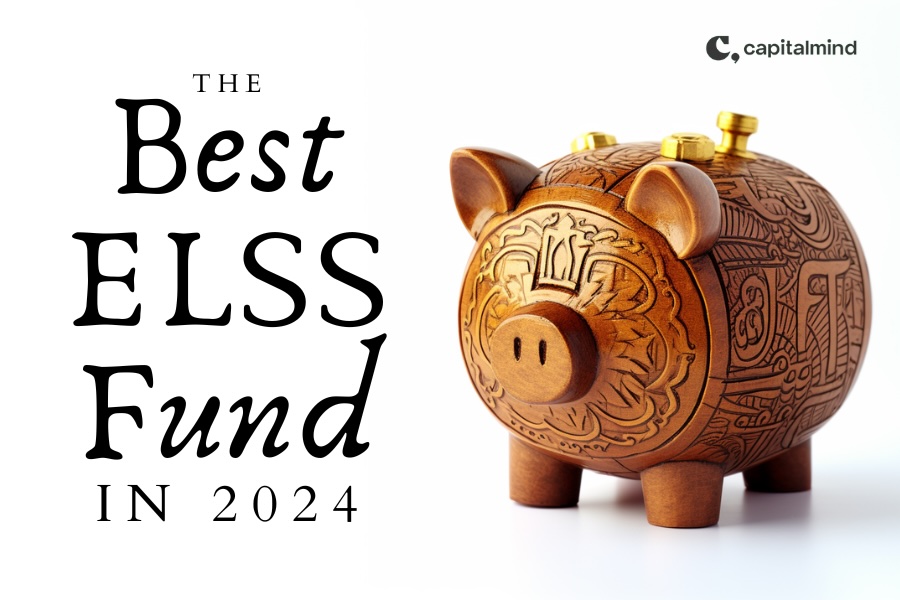This is a two-part series looking at international mutual funds available in India. Part 1 starts by looking at the universe of international mutual funds available in India to shortlist 7 funds. Part 2- The best active international mutual funds in India[Premium Access] dives deeper into the shortlisted funds to arrive at our take on the best international mutual funds available to investors in India.
Should Indian investors invest overseas?
Yes. India is roughly 7% of world GDP. A large part of economic activity happens outside our borders. Unless you count introducing the sachet version of the 14th variant of a dandruff shampoo as innovation, the most innovative companies in the world are outside India.
Listed companies in India produce a lower percentage of GDP as profits compared to other countries as per this 2019 Business Standard report:
The combined net profit of BSE500 companies at $63 billion is equivalent to 2.31 per cent of the country’s GDP against 6.1 cent in the US, 4.24 per cent in Brazil, 3.63 per cent in China, 2.35 per cent in Indonesia, 3.54 per cent in Vietnam, 5.29 per cent in South Korea, and 15.9 per cent in South Africa. Only Mexico has a lower ratio than India at 1.71 per cent, according to data from Bloomberg and the International Monetary Fund (IMF). [link]
Therefore for Indian investors, it makes sense to allocate a non-trivial portion of their portfolio to companies outside India. The question then becomes where and how and not if.
There are many more ways to invest overseas now than even a year or two ago. For this discussion, we’ll consider the most accessible avenue available to most investors. Mutual Funds.
International Mutual Funds available in India
There are currently 41 international mutual funds in India managing ₹ 13,298 Crores. This excludes equity funds that invest under 35% of AUM in foreign companies. For context, aggregate AUM in domestic large cap funds is ₹ 1,94,013 Crores ~15x.
Table shows a snapshot of the number of international funds by fund house, geography they invest in, and total Assets under Management as of January 2021.
International Mutual Funds in India: Lay of the land
- Of the 41 funds, 34 are fund of funds i.e. investing into another fund either run by the global parent of the AMC, or through a tie-up with an international asset manager
- Invesco, PGIM, HSBC, Franklin Templeton are global AMCs with an India presence, and so have global funds whose units the Indian FoF buys
- India-based AMCs have tie ups with international AMCs to get access: DSP invests in Blackrock funds (their ex-JV-partner), Edelweiss invests in JP Morgan Funds, Axis invests in Schroder Funds (who owns stake in Axis Mutual Fund). Some, like Motilal Oswal and Sundaram operate their own international fund domiciled overseas
- The remaining 7 funds are conventional funds that directly own securities based on fund manager discretion
- While almost half the funds that invest overseas are Global in nature, more than 50% of current AUM (₹ 7,702 Crores) is with funds investing in the US
- DSP and Edelweiss have the most number of international funds, 6 each, followed by Aditya Birla Sun Life and HSBC with 4 funds each
- But in terms of assets managed, Franklin Templeton with nearly ₹ 3,000 Crores is the Indian “international funds” market share leader followed by Motilal Oswal
- Interestingly Motilal Oswal is the only fund house offering passive index fund options. Motilal’s FoFs invest in the the Nasdaq 100 and the S&P 500. Kotak recently launched its Nasdaq 100 FoF. The remaining 38 international funds available to Indian investors are actively managed
Since we did this analysis in early 2021, AMCs have launched a host of new international mutual funds.
| New International Mutual Funds in 2021 | Launched | Active / Passive | Underlying Fund / Index |
| Axis Greater China Equity FoF | Feb-21 | Active | Schroder International Selection Fund Greater China |
| Kotak Nasdaq 100 FOF | Feb-21 | Passive | Nasdaq 100 |
| HSBC Global Equity Climate Change FoF | Mar-21 | Active | HSBC Global Equity Climate Change Fund |
| SBI International Access – US Equity FoF | Mar-21 | Active | Amundi US Pioneer Fund |
| Mirae Asset NYSE FANG+ ETF | May-21 | Passive | NYSE Fang+ Index |
| BNP Paribas Funds Aqua FoF | May-21 | Active | BNP Paribas Fund Aqua |
| Axis Global Innovation FoF | May-21 | Active | Schroder International Selection Fund Global Disruption |
| Kotak Global Innovation FoF | Jul-21 | Active | Wellington Global Innovation Fund |
| IDFC US Equity FoF | Aug-21 | Active | JP Morgan US Growth Fund |
| Mirae Asset S&P 500 Top 50 ETF FoF | Sep-21 | Passive | S&P500 Top 50 |
| HDFC Developed World Indexes FoF | Sep 2021 likely | Passive | MSCI World Index |
For active funds, we’d need to see at least some track record before considering them for inclusion. The only interesting funds for us would be the passive funds on the list, specifically the HDFC Developed World Index which for the first time offers access to the MSCI World Index to Indian investors.
Some of the older funds worth a mention, for the right, wrong, or just interesting reasons. Note these are not recommendations:
True-to-label Fund of (Many!) Funds: ICICI Prudential Global Advantage Fund
A Fund of Funds like most other international equity funds launched in Oct 2019. Unlike other funds that are feeders to a single parent fund this ICICI Prudential fund holds five other funds of which only one is from the ICICI Prudential stable. It currently holds:
- Franklin Asian Equity Fund
- Nippon India ETF Hangseng Bees
- ICICI Pru US Bluechip Equity Fund
- Nippon Japan Equity Fund
- Aditya Birla SunLife Commodity Equity Fund
It has a respectable 20% 1 year return but you have to wonder about the impact of all those active decisions will have on fund performance net of fees.
International Multi-Asset Fund: DSP Global Allocation Fund
A fund of fund investing in the Blackrock Global Allocation Fund, and the only international Multi-Asset fund in India. Its five year annualised return of 11% is below the NIFTY but at half the volatility (standard deviation) and a better Sharpe and Sortino ratio (measure of return delivered for volatility endured). As of writing this, it holds 21% debt and 11% Cash in its portfolio. Its worst performance in the last five years is -0.98% in 2018 when many equity-only funds were down double-digits in the red.
Global Smallcaps: Principal Global Opportunities Fund
Probably the only Global small cap fund available to investors in India. It holds 195 stocks the largest of which are Amedisys, Beach Energy, Steadfast Group and other companies we have never heard of. It has outperformed the NIFTY over five years with surprisingly little extra volatility.
Worst-of-all-worlds: HSBC Brazil Fund
Currency instability, Political turmoil, and volatile corporate profits. The perfect storm of where not to invest, especially internationally, the fund is one of only three on our list that are down for the last year. The HSBC Brazil Fund lost 22% in 2020. The other two negative for 2020 are Franklin European Growth Fund (-8%) and Aditya Birla Sun Life Global Real Estate Fund (-7%).
How should an investor pick International Mutual Funds?
If we knew which country and sector stocks will do better over the next decade, this would be a very short section. Given we don’t, we would allocate 100% of target international allocation to one of more low-cost passive funds.
But that’s not satisfying to most investors. Given the option of investing in General Motors or Tesla, most of us will have a strong inclination toward one over the other. That is the forecaster in us.
So, we’ll break this question of picking international Mutual Funds down into Active and Passive. The forecaster in us can feel more in control by picking the Active fund, and the remaining should ideally go into a low-cost Passive fund.
The split of Active : Passive can potentially be 30:70 all the way to 0:100 depending on personal preference i.e. availability and willingness to put in the mental and emotional energy involved in investing actively.
Passive International Exposure
The Passive component is almost Hobson’s choice for Indian investors.
The ideal international passive index for Indian investors would be a “Market Cap weighted World ex-India Index”.
Since nothing of the sort exists yet, our options are the Motilal Oswal N100 Fund of Fund and Motilal Oswal S&P500 Index Fund.
We compared the two when the S&P500 index fund launched in April 2020.
When we did our analysis of the impact of asset allocation on portfolio returns, only one international index fund was available. Now there are three (Kotak recently launched a Nasdaq 100 index option.
This space will hopefully see more options for Indian investors over the next few years.
Active International Exposure
Picking stocks is hard. Picking active stock pickers and counting on them to beat the benchmark is even harder.
Will past performance indicate future returns? Maybe. Maybe not. The past is all we have to go by, and there are a few different ways to look at it.
How have international funds performed
31 of the 41 international funds have been around for over five years. Of these, 15 have beaten NIFTY index funds. The red-shaded line is the median NIFTY index fund. This means, the funds above the red line have delivered higher annualised returns over the last five years.
Table below shows relative performance over three years.
Of the 33 funds with three year track records, 20 have delivered higher returns than the NIFTY.
Over the last three to five years, funds investing primarily in the US have outperformed those investing elsewhere. The one fund investing in Chinese companies – Edelweiss Greater China Equity Offshore is the top performer over the last five years. Funds investing in Europe, Japan, and Brazil have done the worst relative to the NIFTY.
Also not apparent in the above tables is how sector or style tilt has impacted returns. Edelweiss US Value Equity Offshore has underperformed the NIFTY over five years. Similarly, DSP World Agriculture fund, a confusing name since it invests in food companies like Nestle and restaurants, has done relatively poorly. Anything with a technology tilt has done well.
Shortlisting Active International Funds
We’ll first eliminate funds that do not have a 3 year track record. Next we’ll eliminate funds with AUM less than 100 Crores. Then let’s eliminate sector-focused funds.
Finally we consider funds that have outperformed the NIFTY at least 50% of the time in the last 3 to 7 years that we have data for. This is not because it ensures future outperformance but because behaviourally we are more likely to be able to stay invested in a fund that outperforms consistently albeit by a smaller margin over a fund that delivers rare but big outperformance.
Our shortlist of Active International Funds looks like this (ordered by 3 year returns):
- PGIM India Global Equity Opportunities Fund
- Edelweiss Greater China Equity Offshore
- Franklin India Feeder – Franklin US Opportunities Fund
- Nippon India US Equity Opportunities Fund
- ICICI Prudential US Bluechip Equity Fund
- DSP US Flexible Equity Fund
- Franklin Asian Equity Fund
Table below summarises key information about our shortlisted funds.
We have seven funds with return profiles better than the NIFTY in most years and with lower downside volatility.
The column CV is Coefficient of Variation which is calculated by dividing the standard deviation of annual returns by the Average return. The ideal fund would have consistently (low standard deviation) good returns (high average) and therefore a low coefficient of variation. The table shows four of the funds have lower CVs than the NIFTY index funds.
No one parameter is the deciding factor but taken together, we can be reasonably confident that our shortlist has a strong set of potential international funds to allocate to for the long-term. There is never only way to compare funds, so another set of eyes looking at the same set of funds might well come up with a different shortlist.
The underlying data used for this post is available on this shared google sheet:
In a follow up post we’ll take a closer look at the shortlisted funds to see if we can arrive at a final 1-2 funds for active international allocation.
This article is for informational purposes only and should not be considered as investment advice.
For immediate access to equity and fixed income model portfolios, premium research, and the Capitalmind member community, join Capitalmind Premium today. Use Code NEW2021 for a discount.









